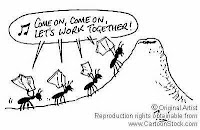
Small changes in the rules that govern local interactions between neighbors can cause big changes in the pattern or order of the entire system. Crystals can form from liquids showing a spontaneous increase in order.Ĭertain systems flirt with the boundary between complete randomness and order - a term Christopher Langton, a leading researcher in emergent behavior, termed "the edge of chaos." What has ultimately become clear is that the generation of order manifested by patterns in nature is an inevitable product of the interaction of local elements in a system. Nonliving examples of emergence include natural magnets that align themselves into a common North-South orientation. Fish move in concert organizing themselves into schools birds and pack animals flock or herd in a similar manner. Other species in the animal kingdom also display autonomous order. Insects are a familiar example who manage to undertake massive building projects such as hives and mounds. This spontaneous creation of order, is present all around us. Typically, a system that exhibits emergent behavior provides more complexity than the sum of its parts.

It is the combined actions of all of the individuals using their feedback machines, that result in the emergent behavior of the system. Yet, each individual in the system is using a feedback machine to receive sensory input, process the inputs according to a fixed set of rules, then act upon the result. The enigma is that the system's emergent behavior can be more and different than that of any individual in the system. The phenomena of emergent behavior is one form of proof that patterns in nature are connected.įlocking, schooling, and herding are examples of the emergent behavior of a system resulting from self-organization. For example, in the case of fish schools, the connection between individual fish is the effects of each individual's sensory organs that define proximity.

The idea that nature uses algorithms has opened up new fields of investigation into the formation of nature's patterns.Ĭonnectivity between an individual's nearest neighbors is essential if emergent behavior is to exist.

This compacting of information is a fundamental aspect of life – for indeed DNA itself is a template of rules. The interesting thing about algorithms is that they require less information and space to operate than does an equivalent table that lists all the possible outcomes of a computation. An algorithm is a list of the exact steps necessary to carry out a desired computation, a list that comes with a guarantee that that the computation will stop with the correct answer. Computer scientists call these rule sets algorithms.


 0 kommentar(er)
0 kommentar(er)
